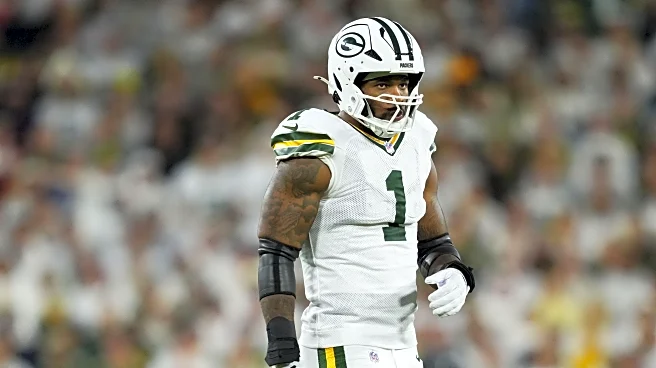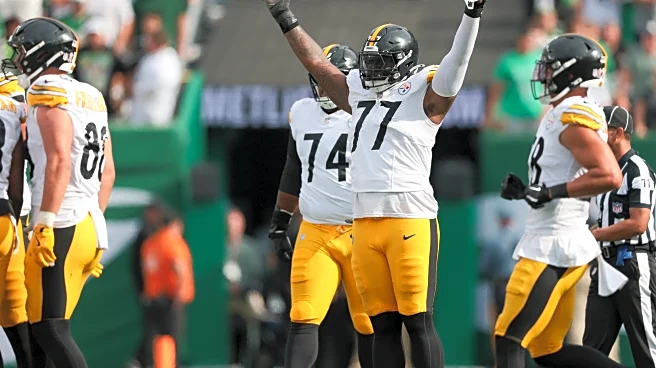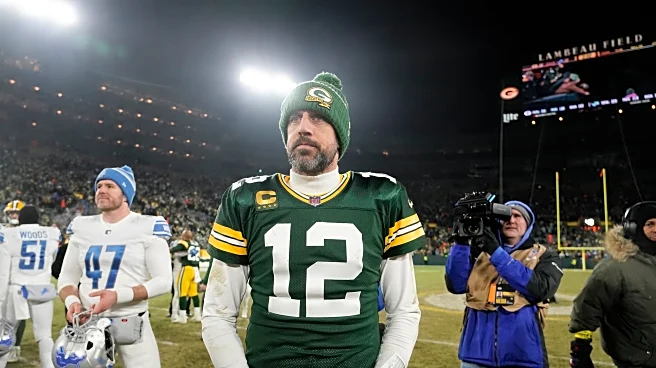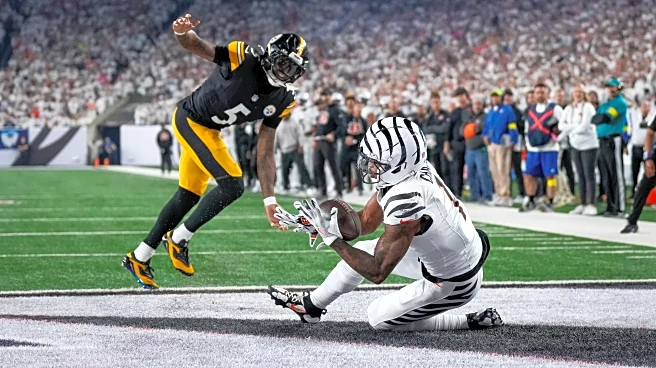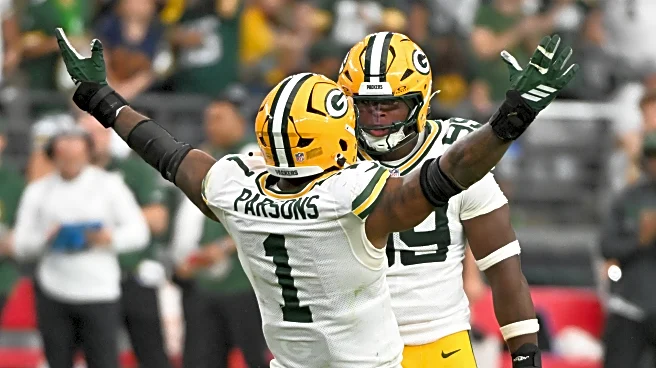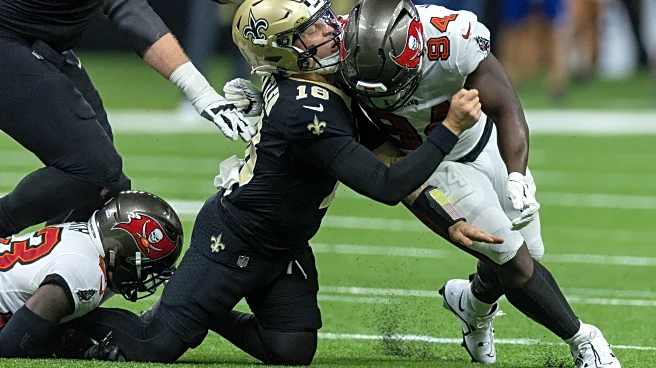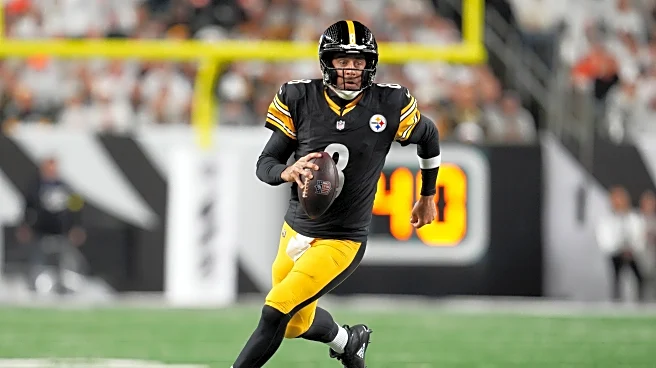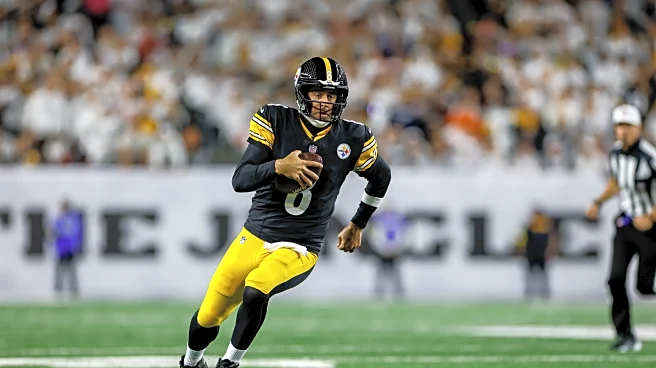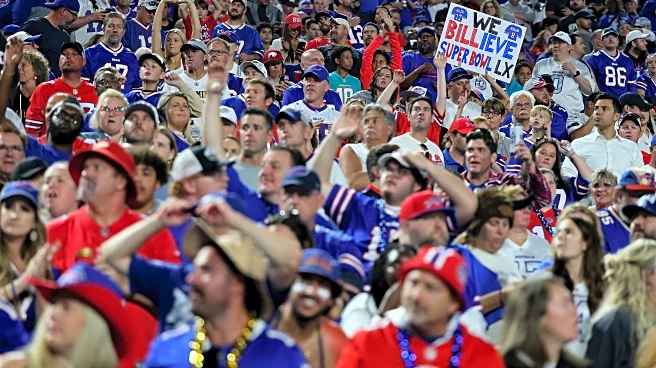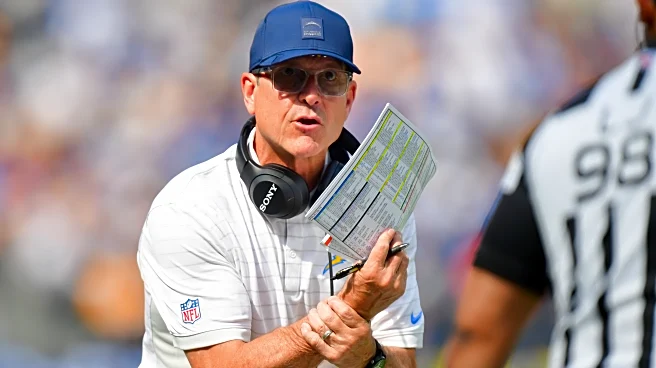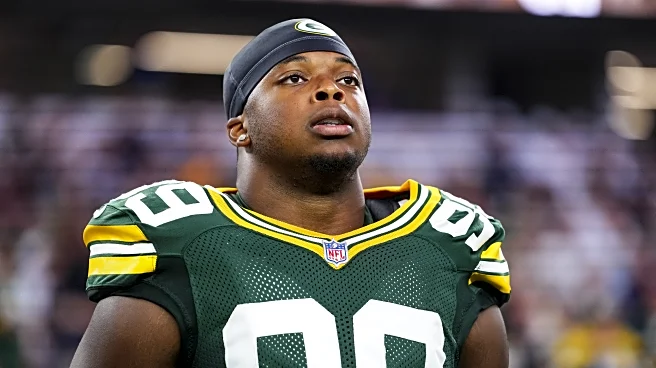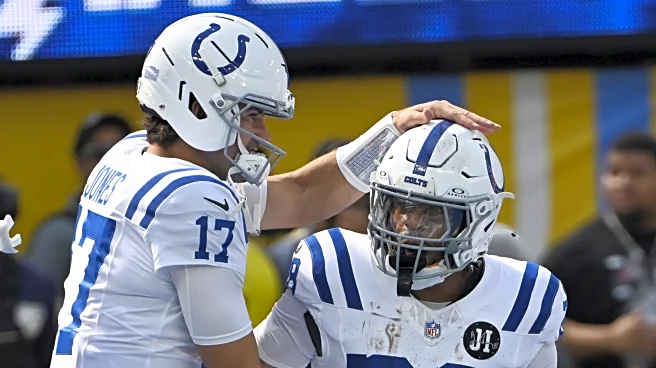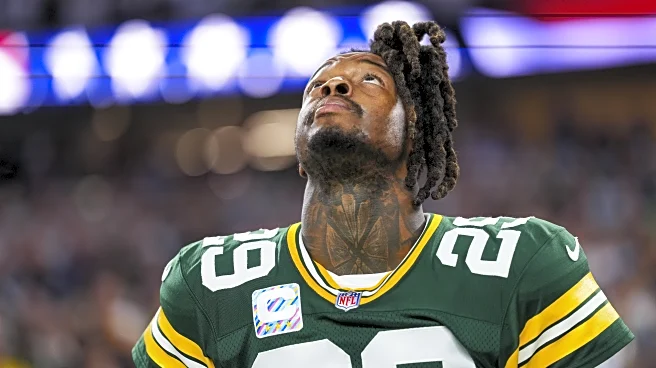It’s a battle of historic franchises on Sunday Night Football Week 8 as the Pittsburgh Steelers host the Green Bay Packers.
Now on the Steelers, Aaron Rodgers will be going up against his former team and Green Bay successor in the Packers and quarterback Jordan Love.
After trading for edge rusher Micah Parsons before the season, Green Bay was catapulted into the Super Bowl contenders tier by the media. Currently sitting at 4-1-1 and atop the NFC playoff picture, it would seem that bet paid off for the Packers.
However, those who follow Green Bay would tell you the team still has a way to go before it lives up to its potential.
What should the Steelers expect in primetime this week?
What to expect from the Packers’ offense

Rushing YPG: 117.5 (15th)
Passing YPG: 225.8 (12th)
PPG: 26.3 (7th)
RB: The Packers offense is a group that has the potential to be one of the best in the NFL – and it sometimes looks the part – but it hasn’t always lived up to expectations.
The central figure, of course, is quarterback Jordan Love. Drafted in the first round in 2021, he sat behind Aaron Rodgers for two years before becoming the starter in 2023. He’s proven himself as a low-to-fringe top-10 quarterback since, with 4,159 passing yards in his first year as a starter and 3,389 in his second.
He’s a strong-armed, sometimes over-aggressive passer who has still been efficient this year (69.3% completion). He’s in that tier of player who has a couple of reps each week that make the online film junkies rush to their screen recording app.
While he doesn’t run much, he’s plenty mobile in the pocket and can use his legs to get yards when needed.
Love is notably a big-play hunter as a passer. However, the foundation of the Packers’ offense is anything but. Green Bay’s offense uses a quick passing game and interior run game to set up Love’s deep, play-action shots.
Per NFL Pro, Love has the ninth-highest deep throw percentage in the league (11.9%) but only the 17th-highest average air yards per target (7.8 yards).
That’s to say, while Pittsburgh’s cover 3-heavy scheme and opportunistic style of play could result in some turnovers against Green Bay’s downfield shots, the Joe Flacco-style short passing game that burned Pittsburgh last week will absolutely be part of the Packers’ game plan in Week 8.
Helping out Love is a deep supporting cast at pass catcher. The Packers have lacked a true WR1-type player for a bit, but they have a plethora of solid WR2/3 types. Even with Jayden Reed on injured reserve and Dontayvion Wicks expected to miss Week 8, Green Bay still has Romeo Doubs and first-round pick Matthew Golden, who’s slowly started to live up to his draft hype as he’s gotten more opportunities.
Even bigger for the Packers is that Christian Watson is expected back against Pittsburgh. Watson hasn’t played since an ACL injury in 2024. When he’s healthy, he’s an inconsistent but dynamic size-speed threat who will only further open up the Packers’ downfield offense. If he’ll look like his old self in his first game back is a legitimate question, though.
Tight end Tucker Kraft is also a rising star. He’s drawn some George Kittle comparisons that aren’t that far off. He’s a multi-level threat who can win vertically and also as a yards-after-catch weapon.
The Packers got off to a slow start on offense last week against the Cardinals, and it was largely because it took some time for the run game to get going. Green Bay played just 56 offensive snaps to Arizona’s 76, largely due to some short drives in the first half.
Most of the discourse around the Green Bay offense has to do with its passing game, but the Packers run at the fourth-highest rate in the NFL (48.8%). Still, the Packers’ run blocking hasn’t been as strong as the pass blocking this year (they’ve had some injuries up front, to be fair), which has been a struggle for a team that still wants to establish the ground game as part of its offensive identity.
Green Bay had to rely on running back Emmanuel Wilson early against Arizona as starter Josh Jacobs was dealing with illness and an injury, but the Packers had to switch to Jacobs as the game went on. The Green Bay O-line didn’t have the most dominant game, but Jacobs’ 4.2 yards per carry was a clear upgrade over Wilson’s 2.8.
Jacobs isn’t the most explosive runner in the league. He’s a bruiser who slowly wears defenses down over the course of the game. But he’s faster than you think with some phone-booth wiggle that takes his game to the next level. He’s also a decently productive receiver, with 16 catches already on the young season.
Jacobs is still on the injury report this week with a calf, but I would still expect a decent dose of him Sunday night, especially if Wilson continues to struggle as the alternative.
Beating the Green Bay offense will come down to winning up front to slow the run game first, but Love still absolutely has the talent to win through the air. This will need to be a bounceback game for the Pittsburgh secondary, even though there should be some more turnover opportunities than last week due to the Packers’ willingness to push the ball downfield.
Ultimately, the Green Bay offense is a talented group that hasn’t always lived up to the sum of its parts. Still, it’s a dangerous group that will be a challenge for Pittsburgh on Sunday night.
What to expect from the Packers’ defense

Rushing YPG Allowed: 76.5 (2nd)
Passing YPG Allowed: 212.0 (15th)
PPG Allowed: 20.8 (10th)
RP: The Packers defense is a fascinating one to try to get a read on. They are undoubtedly a talented unit with stars at each level.
All-Pro Micah Parsons and Pro Bowler Rashan Gary star on the defensive line, and another All-Pro, safety Xavier McKinney, patrols the Green Bay defensive backfield. In the middle of the defense, the Packers have two young, former top-45 picks at linebacker coming into their own with Edgerrin Cooper and Quay Walker.
Stylistically, they’ll present an interesting matchup for the Steelers. Pittsburgh’s offense has been at its best when it can run the ball to stay ahead of the chains. The Packers are among the best units in the league at stopping it, despite frequently playing with five defensive backs on the field.
The Packers typically have a four-man front, but they heavily rotate their defensive line to keep players fresh and present different looks. Ten different players on the Packers’ line have played at least one game where they registered double-digit snaps. Players like Devonte Wyatt (who returned to practice this week) and Lukas Van Ness (still a DNP at practices) have missed time due to injury and may have caused the Packers to reach deeper into their rotation, but it’s a testament to how good the run defense has been.
Behind the defensive line, the Packers primarily trot out just two linebackers: Cooper and Walker. A third linebacker, Isaiah McDuffie, joins them when the Packers play in base defense, but he typically only plays around a third of the defensive snaps. For most of the day, the Packers have three safeties on the field with McKinney, Evan Williams, and Javon Bullard. Bullard plays the most in the slot, Williams mostly plays deep, and McKinney plays the most in the box out of the three.
Despite fielding a defense that doesn’t appear bulked up to prevent the run, Green Bay currently ranks second in run defense. But it’s not like they haven’t played against any good rushing teams. So far, the Packers have held all but one of their opponents below their season average for rushing, and some of these opponents are among the best rushing teams in the league.
Take a deeper dive into the numbers, and the Packers stack up well. Green Bay allows the fourth-fewest rushing yards per play (3.5) and average yards before contact (0.77), is tied for the fifth-fewest yards allowed after contact (2.77), is fifth in EPA allowed per rush (-0.13), and, along with the Broncos and Seahawks, has allowed the fewest runs of 10 yards or more (8).
One player to keep your eye on is Colby Wooden. Wooden was a fourth-round pick in 2024 and appears to be having a breakout season. Through six games, he’s already tied his career high in combined tackles (21, 11 solo), as well as setting a career high in stops (11). You have to imagine the progress he showed this summer was part of why the Packers felt OK about including longtime Packer Kenny Clark in the trade for Parsons.
The Packers’ front swarms to the ball. Despite many of the linemen being lighter in weight than you’d expect, they’ve done a good job of shedding blocks to finish the plays themselves or keep the bath clear for one of their linebackers or safeties to get a clear path to the runner.
This will be a true test of how effective the Steelers’ running game truly is. The Steelers should have plenty of size on the Packers, especially in multi-tight end sets and in their jumbo package with Spencer Anderson as a sixth offensive lineman. Filtering out an 11-yard scramble by Jacoby Brissett, the Packers have allowed seven rushing plays to gain 10 or more yards. Three of those plays featured offenses using multi-tight end sets, and five were designed to run outside. If the Steelers want to prove their offense is good enough to make them a contender, they’ll need to win matchups like this that pit strength vs. strength.
Against the pass, the Packers are more middling. The Green Bay defense is tied for ninth in sacks (18), but a majority of that is funneled through Parsons (5.5) and Gary (5.5), who make up 61.1% of the team’s sack production. Green Bay also blitzes at the fifth-lowest rate (19.9%) in the NFL, so it’s been Parsons and Gary or bust. As a unit, the Packers are pressuring the quarterback on 36.3% of dropbacks, 12th-most in the league, one slot behind the Steelers. However, they’re giving opposing teams an average of 2.85 seconds to throw, tied for the 9th-longest rate among defenses, and below Aaron Rodgers’ season average of 2.58 seconds.
Behind their pass rush, Green Bay plays predominantly zone. Only six teams have run fewer man concepts than the Packers.
Like the Steelers, the Packers run a lot of Cover-3, but they run nearly twice as much Cover-2 zone. If the Packers do play man, it’s in Cover-1. As Ryland highlighted earlier, we should see many of the same tactics Cincinnati deployed. After all, Bengal’s head coach and playcaller Zac Taylor is from the Sean McVay coaching tree, and Green Bay’s Matt LaFleur is from both McVay and the Shanahan tree, having worked under Mike Shanahan and McVay.
In many ways, the Packers are seeking the same things Tomlin wants out of his team: A slow-paced, clock-chewing, battle of attrition. The methods they use to get there may vary, but the outcome is similar. Green Bay has played the seventh-fewest defensive snaps in the league (386), but also the fifth-fewest offensive plays (363). And it isn’t just because they have had a bye. Green Bay averages 60.5 offensive plays per game, which is the 18th-most in the NFL. Put another way, only 14 teams run fewer plays per game. Green Bay ranks just 17th in time of possession (30:07), nearly a 50/50 split with their opponents.
As Ryland detailed earlier, the Packers call the fourth-highest rate of run plays, but they’re not the most explosive. Green Bay is just 15th in rushing yards per game. They grind out drives.
Why am I suddenly talking about offense? Because it helps paint a bigger picture of why the Packers have looked dangerous at times, but also left some disappointed with some recent results, such as the 40-point tie with Dallas.
The Packers have been stingy against the pass. They are a swarming defense and sound tacklers for the most part, your classic bend-but-don’t-break style of defense. If Green Bay’s defense has one major flaw other than its highly concentrated sack production, it’s that they’ve struggled to create turnover. The Packers have forced just three turnovers (a fumble, two interceptions) on the year. Only the Jets (1) have fewer takeaways. Green Bay’s only turned it over three times themselves, but that shows you how slim their margin for error is on either side of the ball. They don’t run a lot of plays. Fewer plays mean fewer chances at points. Fewer chances at points, plus a turnover on offense, equals even fewer chances to score, which means even fewer points your defense can allow.
It’s a tough way to live, and something Steelers fans are all too familiar with in the post-Roethlisberger era.
The table below paints a picture of how this Packers defense operates. They run a lot of zone, and offenses have a really good shot at completing passes. None of these defenders are necessarily a weak link in coverage, but with the exception of McKinney, none are elite erasers either. They will let you complete your pass more often than not, but if you want to beat them, you’ll need to get the ball out fast, and you’ll need to have exceptional placement if you don’t want your receiver to make any yards after the catch.
In four out of the Packers’ six games, they’ve held opponents under 20 points. They held Arizona to 23. Green Bay’s worst game came against the Cowboys, in the aforementioned 40-40 tie in overtime.
Dallas and Dak Prescott settled for dinking-and-dunking most of the day, with Prescott finishing 31-40 for 319 yards, three touchdowns, and no turnovers. When Dak was able to create chunk plays through the air, was able to exploit some of those coverages with George Pickens. There were a few routes where Prescott threw up a contested vertical shot against man coverage, but he also was able to nail a hole shot to Pickens against Cover-2 zone.
If Rodgers is on his game, he can hopefully find a way to similarly exploit that. Take the mismatches between the tight ends, running backs, and the linebackers, and find the easy, soft spots in the zone. Then, when the Packers switch up and give you man coverage, hunt for DK Metcalf and check it down if he’s got safety help.
